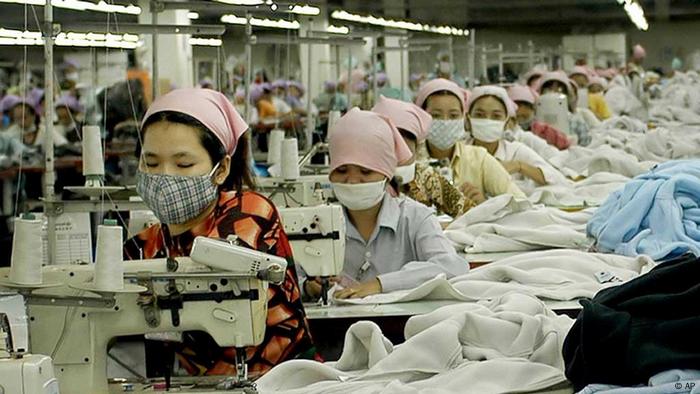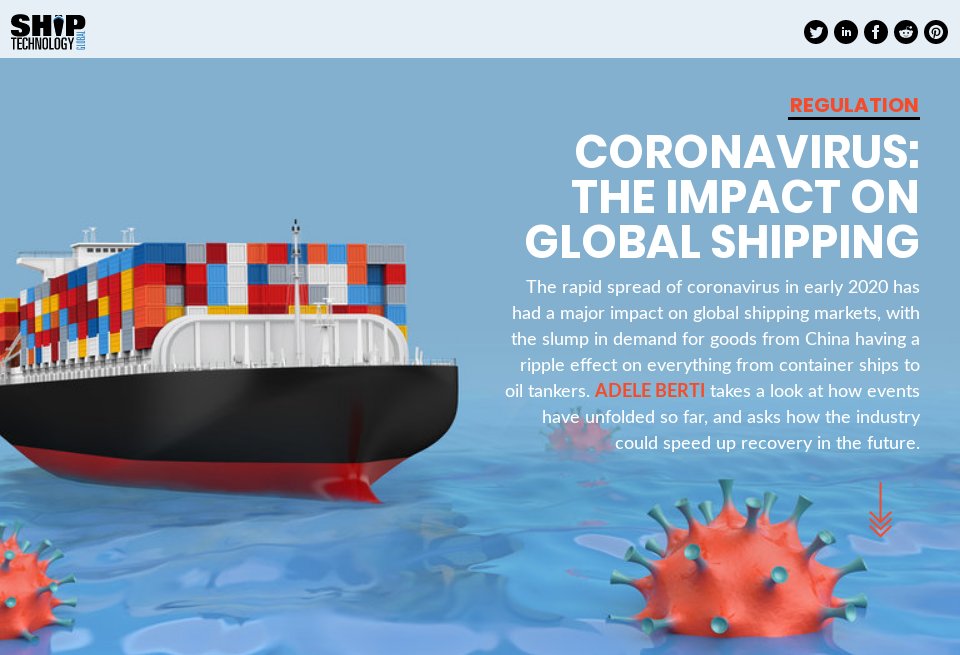_IYcAzfaux.png)
How Asia's textile industry hit by COVID-19 downturn
1. The Asian garment industry pre-COVID-19
1.1 The world’s hub for garment production
Asia is the world's largest garment industry hub for production, with 7 of the 10 world's largest garment exporting countries. The People's Republic of Bangladesh and the Socialist Republic of Vietnam, the second and third largest exporters respectively, have a combined total of US$ 62.3 billion in exports and are increasingly gaining market shares of approximately 35.0 and 74.7% respectively.
1.2 The dominant player: China
Despite the above two countries, China is still the world's largest country in garment exports, producing approximately 33.7% of the world's garments. This is due to China's low labour costs, rapid production thanks to its full-package production systems, its ability to ship to large and important export markets, and the ability to produce on economies of scale. The above factors gave China the edge over other countries that did not have these advantages. However, China's garment exports have dropped from 30% to 15% of the country's total exports, which shows that China is prioritizing other industries over the garment industry.
2. COVID-19 and the Asian garment industry
2.1 Impact on production
There remains little doubt among participating experts that Asia will remain the pre-eminent global production hub post-COVID-19. Asia is still one of the best locations for the garment industry due to its existing scale of operation, access to cheap raw materials, and the participating countries’ production facilities and knowledge. These factors are not easy for other countries to replicate while simultaneously remaining cost-competitive and are not sustainable in the long run.
Some experts indicate that the pandemic may actually have positive impacts on the garment industry in the long term. This would come about as the result of increased scrutiny of industry practices and highlighted sustainable practices from a business perspective, though these are merely theories.
2.2 Impact on Factory
A number of experts believe that COVID-19 will result in a consolidation of manufacturers in the Asian garment industry. In particular, small and medium-sized companies will not have the resources to withstand the economic crisis caused by the pandemic and shut down. The immediate economic backlash of delayed or canceled orders due to a lack of suppliers is estimated to reduce the industry's business by 30% in 2020.
It is expected to see an increasing divide between Asian garment producers. Larger, professionalized manufacturers with the budget to improve on their technology and production are likely to grow, but smaller factories that focus on low-skill, low-pay production may also benefit from the pandemic.
Ultimately, suppliers and consumers will both look to take as minimal risk decisions as possible in the near future. As such, low-risk suppliers may increase their market share, leading to an increase incapable and resilient factories.
2.3 Impact on workers
Experts agree that COVID-19 will further challenge working conditions and place workers in a more precarious position. A list of immediate and long-term impacts includes significant temporary and permanent job loss, an increase in short-term contract use, lowered wages, and unpredictable income. This will lead to increased unemployment and difficulties being able to afford basic goods and services.
Occupational safety and health are likely to become a focus in the near future since the health of workers is key to the company/factory's operation. An outbreak of the pandemic would lead to closures and delays in production, causing financial issues. Furthermore, many workers may use public transport to get to work or live in accommodation in close proximity to other workers, which makes social distancing difficult to enforce. This results in workers being at higher risk of being infected by the virus.
On the other hand, this focus on safety and health for workers may lead to improved quality in working conditions in the future. This, alongside an increased pressure on buyers and sellers to improve standards of health, may improve conditions for workers, particularly for factories that are already investing in upgraded technology and production facilities.

3. The reason leads to supply chain disruption:
3.1 Reducing demand
The COVID-19 pandemic led to halted production in China first, then spread to the rest of the world causing ceased production worldwide. Currently, the two largest markets for the garment industry, Europe and America, are still canceling orders, which causes concerns in many sourcing countries.
Since buyers are halting their payments and canceling contracts, small businesses are suffering as a result, causing the Sustainable Textile of Asian Region (STAR) Network to issue a statement, advising buyers to honor their contracts with their suppliers and be considerate of the impact the pandemic has on workers and businesses.
3.2 Reducing production
The local epidemiologic situation in key Asian countries has affected the availability of the workforce and therefore the production of all related goods. One such concern is that production of garments and textile goods could be moved away to other sourcing countries that are recovering faster than the Asian regions or are closer to the buyer’s countries to reduce supply chain risks.
As a result of the pandemic, governments around the world in developed countries are implementing safety measures and actions to ease the pressure on their economies from measures put in place to limit the spread of the virus. This action is absent in developing countries, due to their lack of financial ability to respond to the pandemic’s economic impacts.
3.3 Transport connectivity impact
Due to the pandemic, maritime transport has been affected similarly to all other forms of shipping and logistics transport, including a reduction in service frequency, and changes in routing, in particular, the Asia-Northern Europe services which play a key part in the trade of textile and garment goods.
As a result of the reduced production and demand, shipping lines are reducing the number of ports on each voyage, which is likely to affect the connectivity for sourcing countries and make economic recovery more difficult. This will particularly affect low-cost sourcing countries that are highly dependent on said exports for their economy, combined with the socio-economic effects of the pandemic that will stress their limited financial means and health systems.

4. Recommendations for garment manufacturers on how to address the COVID-19 pandemic
In this current situation, it is important for garment manufacturers to stay resilient and to prepare for the possibility that the COVID-19 pandemic will have a long-lasting impact on their businesses.
Ensure that their employees are in safe working conditions:
To prevent any further spread of COVID-19, which will ensure a more productive and healthier workplace. The factory should also ensure workers are adequately informed of how to prevent the spread of COVID-19, and if forced to terminate contracts for some of their workers, they should ensure workers receive as little harm as possible as a result of the actions.
Stay updated on the latest news of COVID-19:
This will help with decision-making based on how the pandemic is / will affect their business. In addition, they should also be concerned with their own government’s response plan. In many countries, governments are taking steps to ensure the stability of the economy and protect businesses from the impact of COVID-19. This support from governments may be available to factories and potentially keep them operating through the pandemic.
Choosing the right shipping partner for your fabrics and textiles:
This can help you overcome those difficulties and maintain a strong supply chain. VICO Logistics has been serving customers in many countries and retail supply chains for more than 30 years. We offer customized prices for customers, depending on the volume and size of goods, etc. We advise logistics solutions and suitable garment shipping methods that best suit your business need.
(This article is available in Chinese and Vietnamese)
Contact VICO Logistics today to see how we can help you stay ahead in this fast-changing industry.
Reference from:
https://www.ilo.org/global/lang--en/index.htm
Related posts:
>> How are textiles & garments transported?
>>How logistics enhance Vietnam textile and garment industry’s advantages?






